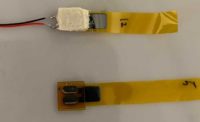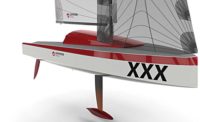GREENBELT, MD—Engineers at NASA’s Goddard Space Flight Center here are using additive manufacturing technology to create printed sensors. The autonomous multifunctional sensor platform will be capable of sensing minute concentrations of gases and vapor, atmospheric pressure and temperature, and then transmitting that data via a wireless antenna.
A 3D printing system developed by Northeastern University will be used to apply nanomaterials, layer-by-layer, onto a substrate to create tiny sensors.
“Nanomaterials, such as carbon nanotubes, graphene and molybdenum disulfide, exhibit interesting physical properties,” says Mahmooda Sultana, a NASA engineer heading up the project. “They are highly sensitive and stable at extreme conditions. They are also lightweight, hardened against radiation and require less power, making them ideal for space applications.”
Northeastern University engineers will use their Nanoscale Offset Printing System to apply the nanomaterials. Once printed, Sultana’s group will functionalize the individual sensors by depositing additional layers of nanoparticles to enhance their sensitivity, integrate the sensors with readout electronics and package the entire platform.
“Instead of building one sensor at a time and then integrating it to other components, 3D printing [will enable us] to print a suite of sensors on one platform, dramatically simplifying the integration and packaging process,” explains Sultana. “The beauty of our concept is that we’re able to print all sensors and partial circuity on the same substrate, which could be rigid or flexible. We eliminate a lot of the packaging and integration challenges.”






